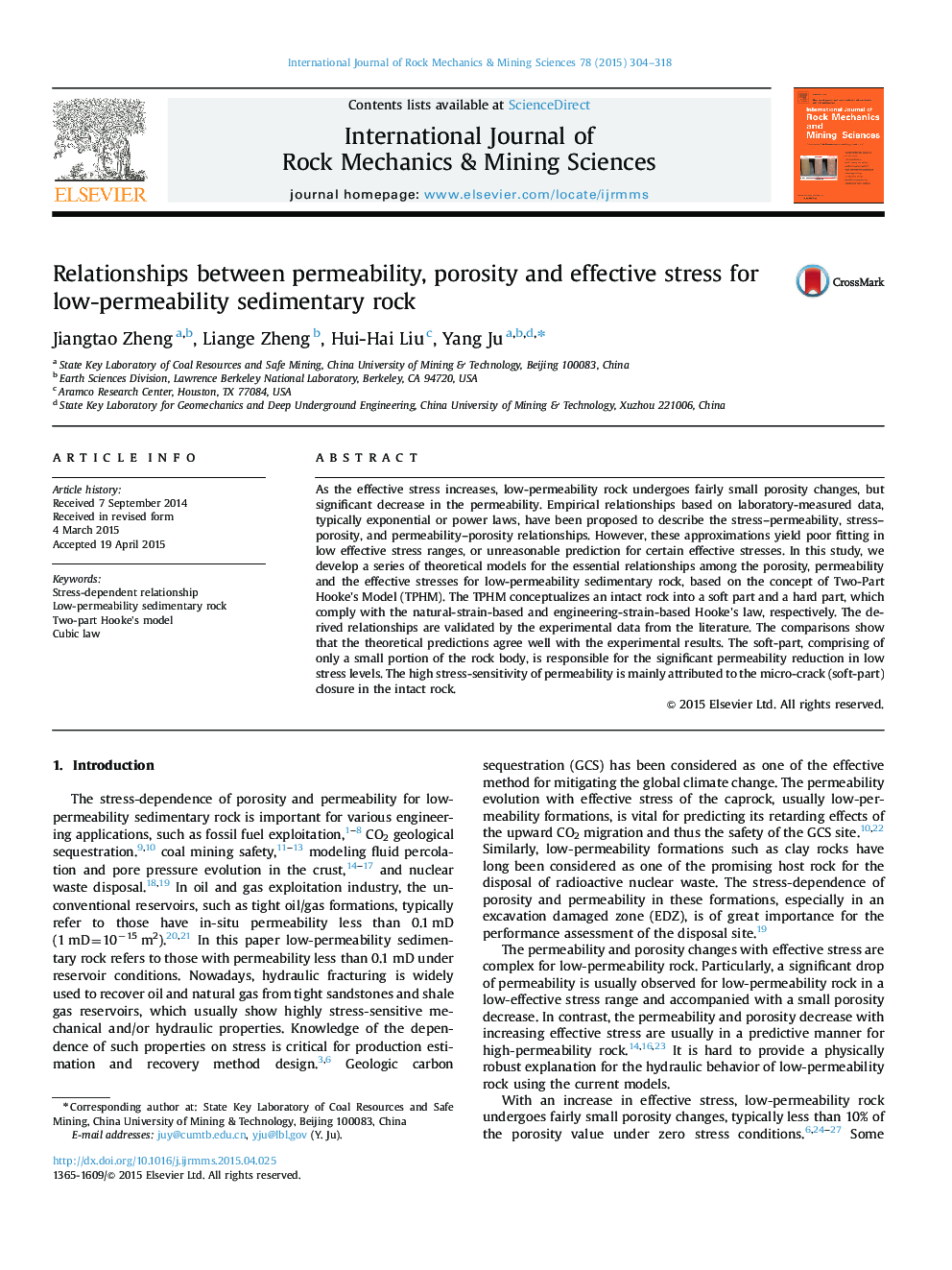| Article ID | Journal | Published Year | Pages | File Type |
|---|---|---|---|---|
| 809406 | International Journal of Rock Mechanics and Mining Sciences | 2015 | 15 Pages |
•We theoretically derive relationships among porosity, permeability and effective stresses for rock.•Relationships based on the Two-part Hooke's model can well reflect rock properties.•Our derived relationships are validated by experimental data from literature.•The stress-sensitivity of low-permeability rock is caused by micro-cracks closure.
As the effective stress increases, low-permeability rock undergoes fairly small porosity changes, but significant decrease in the permeability. Empirical relationships based on laboratory-measured data, typically exponential or power laws, have been proposed to describe the stress–permeability, stress–porosity, and permeability–porosity relationships. However, these approximations yield poor fitting in low effective stress ranges, or unreasonable prediction for certain effective stresses. In this study, we develop a series of theoretical models for the essential relationships among the porosity, permeability and the effective stresses for low-permeability sedimentary rock, based on the concept of Two-Part Hooke's Model (TPHM). The TPHM conceptualizes an intact rock into a soft part and a hard part, which comply with the natural-strain-based and engineering-strain-based Hooke's law, respectively. The derived relationships are validated by the experimental data from the literature. The comparisons show that the theoretical predictions agree well with the experimental results. The soft-part, comprising of only a small portion of the rock body, is responsible for the significant permeability reduction in low stress levels. The high stress-sensitivity of permeability is mainly attributed to the micro-crack (soft-part) closure in the intact rock.
